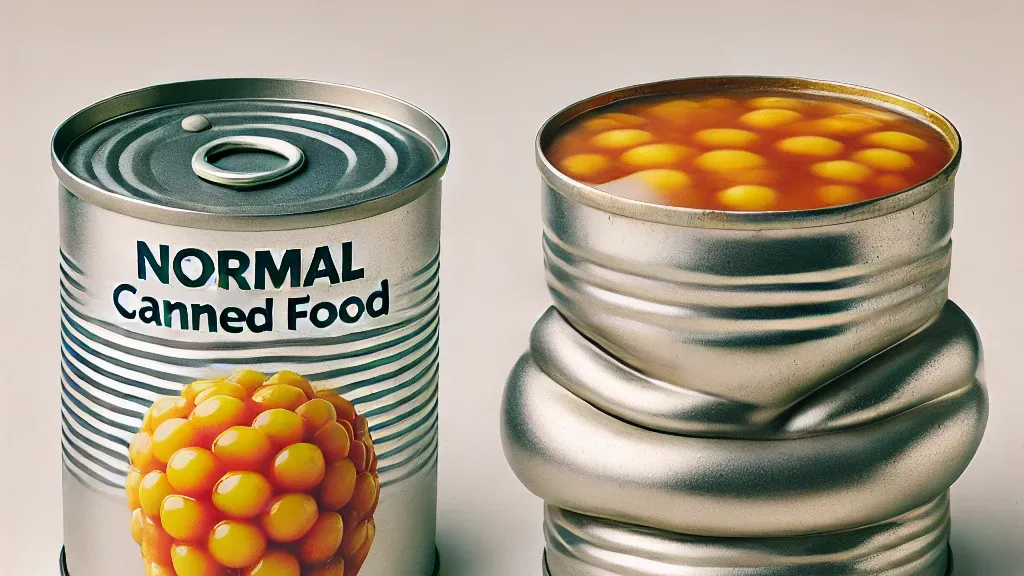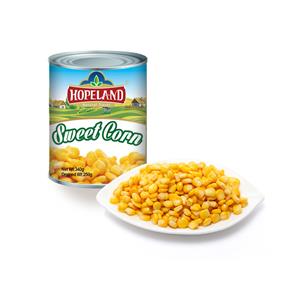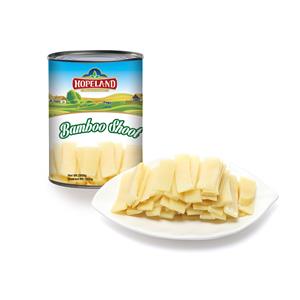Why You Should Never Eat Swollen Canned Food: A Closer Look at Safety Concerns Behind the Warning?
“I followed the instructions carefully—washed the fruit, filled the jar, added sugar, and then steamed the jar. I thought I had made a proper fruit preserve,” said Ms. Zhang, a resident of Shanxi Province. “But after just a few days, the lid started to bulge. I wasn't confident in the seal, and sure enough, something went wrong.” Inspired by DIY videos on social media, Ms. Zhang tried making her own canned fruit but was left disillusioned when her homemade version spoiled within a week. Ultimately, she returned to the supermarket and bought factory-sealed cans instead.
This experience sparked her curiosity about how food companies manage to ensure the safety of canned foods, especially when she compared her failed attempt with the long shelf lives and reliability of commercial products.
The Rise of DIY Canned Foods—and the Hidden Risks
Across short video platforms, DIY canned food tutorials flourish with the seasons. During the pineapple harvest, for example, it’s not uncommon to see numerous “how-to” clips on making homemade pineapple preserves. These videos may seem easy to follow, often emphasizing steps like sterilizing jars, cooking the fruit, and steaming the filled jars to expel air.
But despite this attention to hygiene, most home kitchens simply can’t replicate the precision, quality control, or sterilization standards of industrial canning. Even slight deviations in temperature or seal quality can result in contamination, spoilage, or worse—dangerous bacteria growth.
This is exactly why the new national food labeling standards in China recommend including visible warnings such as “Do not consume if can is swollen” on canned products. It’s not just a suggestion—it’s a critical reminder grounded in food safety science.
What Does "Do Not Consume if Swollen" Really Mean?

Under the updated Chinese national standard for canned foods, swollen containers—commonly referred to as “bulging cans” or “fat cans” (胖听)—are clearly defined. A swollen can or bottle occurs when gas accumulates inside the sealed container, causing outward pressure that deforms the lid or the body. The standard requires that packaging be intact, leak-proof, and free of bulges to be deemed acceptable.
The China Canned Food Industry Association notes that the term “fat can” often applies to glass jars with visibly raised lids, indicating increased internal pressure. But whether it’s a glass jar, a metal tin, or a plastic cup, bulging is a red flag—it signals potential spoilage or contamination and should never be ignored.
The Dangers Behind Swollen Cans
According to Qiu Kai, Secretary-General of the National Technical Committee for Canned Food Standardization, swelling in canned food can be attributed to two major causes: biological and chemical reactions.
1. Biological Swelling (Bacterial Gas Production):
This occurs when bacteria or spores survive the canning process or contaminate the product after sealing. Inside the sealed environment, these microbes break down sugars and other nutrients, releasing gas and producing spoilage. The food may develop foul odors, an unusual texture, or discoloration. In the worst-case scenario, it can harbor deadly bacteria like Clostridium botulinum, which causes botulism—a rare but life-threatening illness.
Contributing factors to bacterial swelling include:
Poor hygiene during processing
Use of spoiled or low-quality ingredients
Inadequate sterilization temperatures or times
Faulty sealing during or after production
2. Chemical Swelling (Gas from Reactions):
Unlike bacterial swelling, chemical swelling is caused by the reaction between the food’s natural acids—like citric or malic acid in fruits—and the container's inner surface, especially in metal cans. This reaction can release hydrogen gas, causing the can to bulge.
In these cases, the food may still appear safe and retain its taste and nutritional value. However, because the packaging integrity is compromised and gas has been produced, these cans are still considered defective and cannot be sold as qualified products.
Why Industrial Canning Is Safer Than Homemade
According to Zhong Kai, Director of the Science and Technology Center for Food and Health Communication, the safety of canned foods lies in their sterile, airtight environment. “In theory, as long as the packaging is undamaged and the seal is intact, canned foods can be stored almost indefinitely,” Zhong states.
The shelf life, he explains, depends not on an expiration date alone, but on the food’s physical and chemical properties as well as storage conditions. As long as the can is not swollen, canned food typically poses no food safety risk and remains safe for consumption—even years past its printed best-before date.
But swelling changes everything. Once pressure builds up and the can is deformed, the sterile environment is likely compromised. Even the most heat-resistant spores, like those of Clostridium botulinum, can survive improper processing and multiply in an anaerobic (oxygen-free) environment. This is why a swollen can should never be opened, tasted, or consumed, no matter how appealing the contents might seem.
Enhancing Awareness Through Labeling
The new national guidelines help make food safety warnings more visible and easier to understand. By recommending labels such as “Do not consume if can is swollen,” regulators aim to raise public awareness and reduce health risks, especially among consumers unfamiliar with food spoilage signs.
Labels also serve a vital role in educating people who make canned food at home. While many consumers associate food safety primarily with factory-made products, it’s equally important to apply the same vigilance to homemade goods. Clear labeling could help reinforce the dangers of improper sealing and insufficient sterilization.
Takeaways for Consumers

Whether you’re shopping at the supermarket or making your own preserves at home, here are key points to remember:
Never eat canned food if the packaging is swollen, leaking, or has an unusual odor.
Do not rely solely on visual appearance or smell to judge the safety of canned foods.
Check expiration dates, inspect seals, and follow safe storage guidelines.
If making canned food at home, invest in proper equipment, including pressure canners and food thermometers.
When in doubt, throw it out. No meal is worth risking food poisoning or worse.
Final Thoughts
The rise of home canning and DIY food preparation has created exciting new opportunities for culinary creativity—but it has also introduced risks when basic food safety principles are overlooked. Swollen cans are not merely aesthetic flaws; they are visible symptoms of potential danger inside.
The advice to “not consume swollen cans” should never be taken lightly. It’s not just a label—it’s a lifeline. Thanks to advancements in food safety standards and clearer public education, consumers now have the knowledge they need to make better choices. Whether you’re buying canned peaches or preparing homemade pineapple jam, remember: when it comes to food safety, it’s always better to be safe than sorry.




